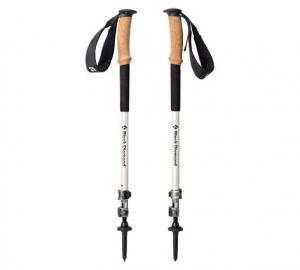Looking for design inspiration? Browse our curated collections!
November 8th, 2018 - 09:25 AM

Why Use Trekking Poles?
As an aging photographer, I find that trekking along forest trails can present some challenges for balance in negotiating rough or steep terrain. I also find that my legs get more tired than and my knees don't hold up as well as they used to in my younger days. Using a hiking staff or trekking poles can help improve balance and transfer some of the load from the legs and knees to the arms and shoulders. For me, hiking uphill or downhill, or for long distances while wearing a camera backpack, necessitates the use of trekking poles. Even when spending a long day in a botanical garden, my trekking poles reduce my fatigue and provide a handy mechanism to lean and rest, when there's no place to sit down. I also prefer a pair of trekking poles to a single hiking staff for better balance and a more natural stride.
Types Of Trekking Poles
Trekking poles come in several styles and are generally constructed of carbon fiber or aluminum. Carbon fiber is lighter and stiffer, but may break more easily with rough or careless use. As an aging photographer who likes to keep his gear as lightweight as possible, I prefer carbon fiber. In addition to their construction material, trekking poles vary by the number of sections, weight, adjustment and locking mechanisms, grips, tips, collapsibility, and if they provide a shock absorber mechanism. For lightweight packability, I prefer a three-section carbon fiber pole. I also prefer cork grips. Grips are a matter of preference - rubber sheds water well; foam is much softer; and cork will break in to conform to the shape of your hand, also allowing a firm grip on the poles when the grips get wet. Most trekking poles also allow you to change tips from carbide tips for gripping the trail, to rubber tips for walking on paved surfaces. I found in using carbon fiber poles that a shock absorber mechanism is unnecessary and could also be a potential detriment to stability when digging in.
Outdoor Gear Lab did a comprehensive review of trekking poles, naming the Black Diamond Alpine Carbon Cork poles their top-rated Editor's Choice. They described the poles as lightweight, very strong for a carbon fiber pole, with an excellent locking mechanism, and the most compact telescoping pole in their review. These are the poles I use and love. Black Diamond poles took the top three spots in their review, with two Leki poles rounding out the top five.
Do yourself a favor, save your back and knees, avoid falls, get a good pair of strong, lightweight trekking poles. You won't be sorry.
Comments
There are no comments on this blog. Click here to post the first comment.